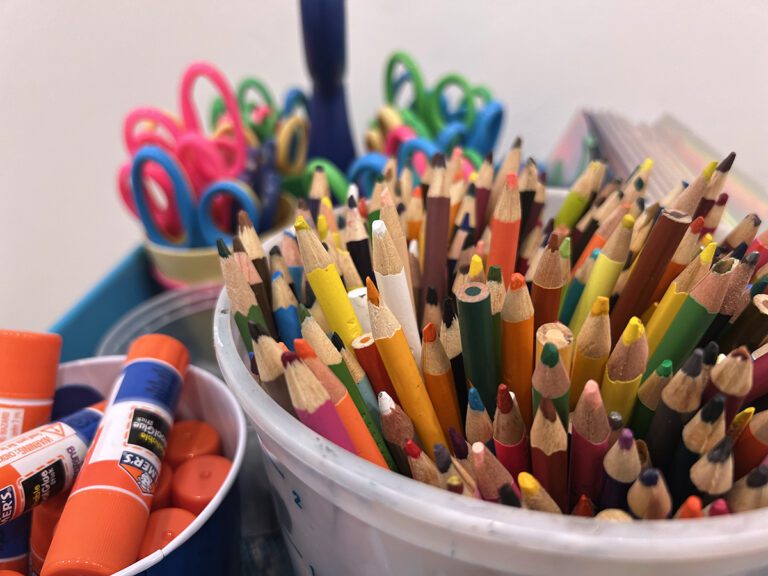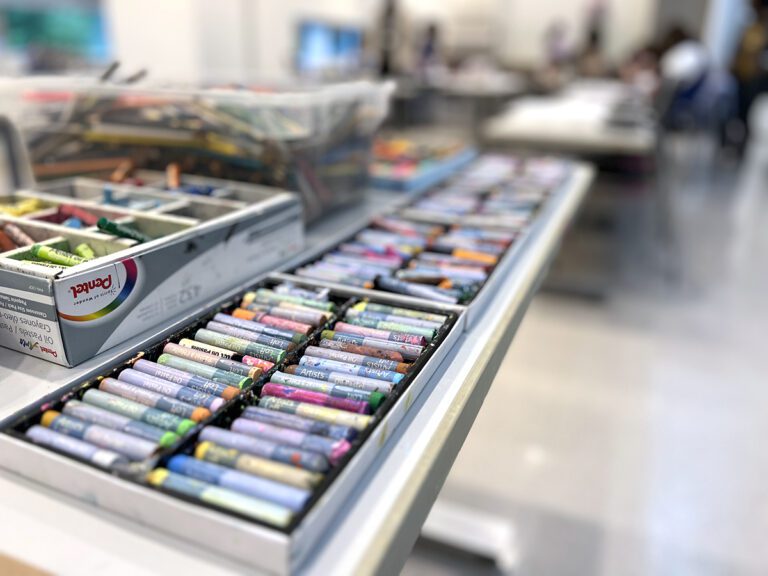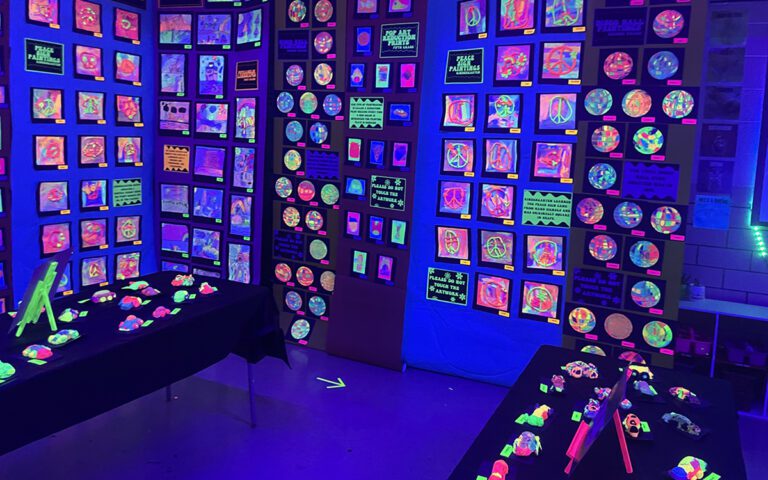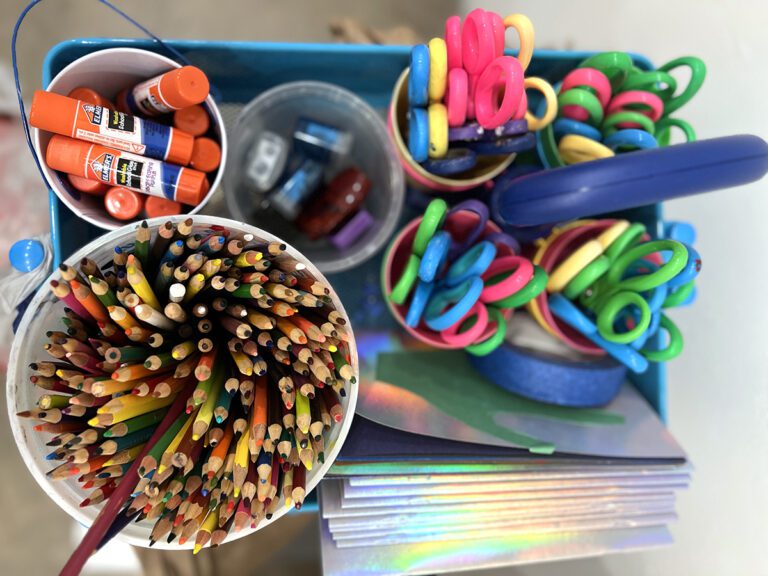We all love our jobs. After all, being an art teacher is the best job ever. Aside from all the rainbows, glitter, moving artworks, and fun art supplies, several things happen on a recurring basis. These things may make us roll our eyes or want to pull our hair out and scream! Instead of letting these things get to us, let’s try looking at them in a new light. So, in honor of Groundhog Day, let’s laugh at ourselves and embrace the daily parts of our jobs that aren’t as glamorous with open arms… that are probably covered with paint or clay.
Here are eighteen parts of our day as art teachers that don’t seem to ever stop!
1. Washing Paintbrushes and Palettes
Did you ever imagine your job as an art teacher would be washing endless paintbrushes and palettes globbed in paint, only to go home at the end of the day to wash endless dishes in your kitchen? I sure didn’t!

Here are five hacks to help streamline some of your paint “dishwashing:”
- Use a silicone makeup brush cleaning mat to thoroughly clean all those bristles.
- Use cheap dish brushes to scrub palettes speedily. Protect those fingers and nails!
- Use a permanent marker to number the bottom of each paint palette. Each student will get a numbered palette that corresponds to their roster number. If any palette gets left in the sink at the end of the period, you will know exactly who slacked off.
- Use old magazines as palettes. Simply tear off the top sheet and toss it in the trash when you are done. All you have to wash is the brush!
- Let the palettes and brushes stay in the sink dirty. Yes, I said it! If you have consecutive classes that are painting, have the next class wash the brushes and palettes before they start working. Students clean better when they know they are about to use them.
2. Scraping Smashed Oil Pastels or Scrubbing Paint Footprints Off the Floor
If I was walking along and felt something smush under my foot, I would pause and see what I stepped on. Just me? Apparently so, because students love to drop oil pastels and then walk on them… and leave them there. Or how about those paint spills that turn your classroom into a map of footprints?
Pro tip: Try using a metal clay rib to pry all the oil pastel off the floor in one fell swoop!
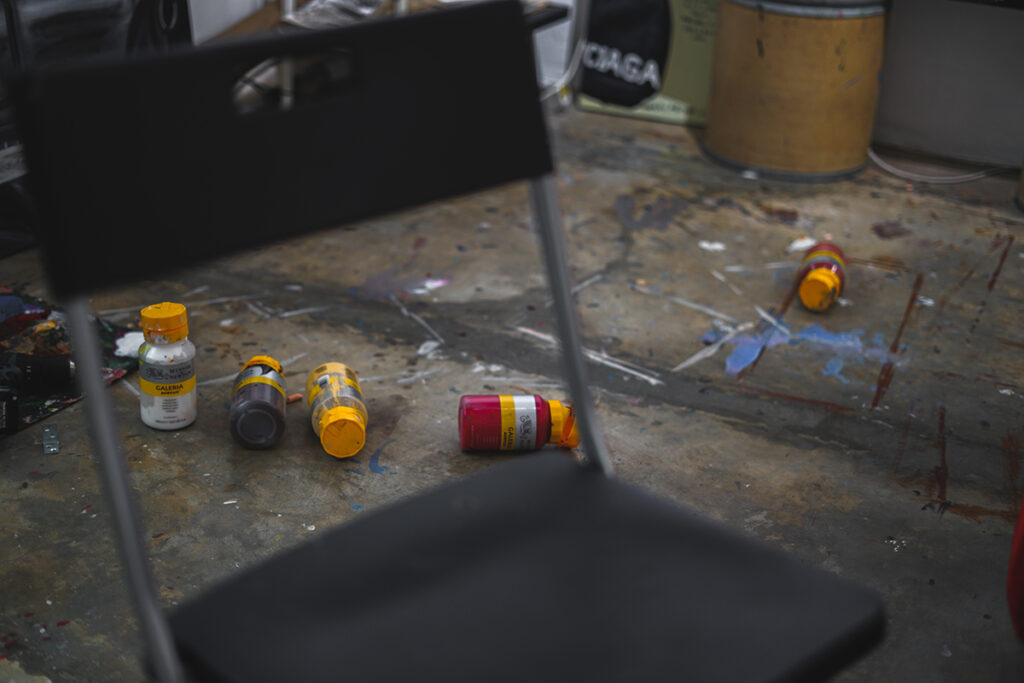
3. Refusing to Make Posters of Any Kind
From other teachers to students (who may or not have ever had you as a teacher), come variations of the following two pleas:
- Can you make this poster for (insert school or personal event here)?
- Do you have a poster board I can borrow?
And no, my 90# drawing paper is not the same as poster board, so don’t ask.
You can be very nice when you turn down these requests. If given enough time, you can also help others make the posters so they can learn how. After all, we truly do want to encourage and equip everyone to make art and be creative!
4. Refusing Last-Minute Requests of Any Kind
Along the same lines, we get tons of requests to help with displays, decorations, and signage for school events. Unfortunately, they usually assume that we aren’t busy and that we have all the time in the world to accommodate requests at the eleventh hour.
Pro Tip: It’s a great practice to establish your availability at the beginning of the school year. Send out an email or make an announcement at the first staff meeting. Share that you are more than happy to assist with decor for events; however, you will need X amount of notice, details on expectations, and the budget before making an informed decision.
5. Unclogging Glue Bottles
Those pesky little orange cones are constantly getting clogged. From needles and unwound paper clips to disassembling and soaking them in hot water, we have become experts at this mundane ritual.
Pro Tip: And while we are on the topic of glue, how about all those missing glue stick caps? Stash some caps when a glue stick is spent so you have extra when some go mysteriously missing later.
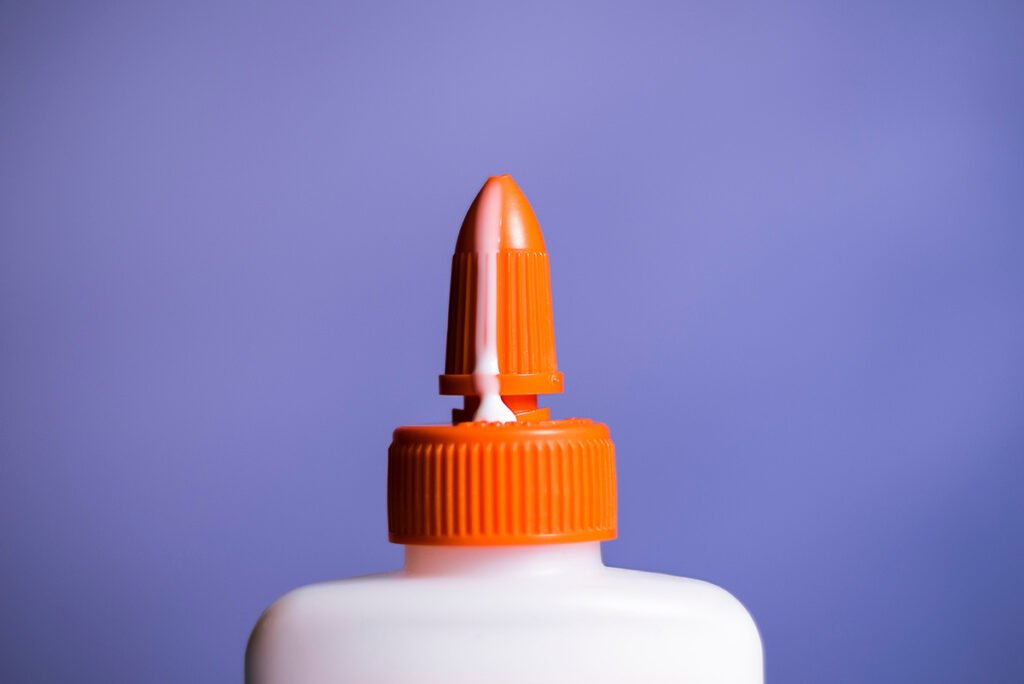
6. Unclogging Paint Bottle Pumps
Speaking of clogs, how about when those paint bottle pumps get backed up? Students pump and pump, and nothing comes out, and then—SPLAT! All of a sudden, a stream of paint shoots across the room.
And then refer back to #2 for all the students who track paint footprints across your floor.
Pro Tip: Avoid the pumps entirely and give plastic squeeze bottles a try for students to distribute their own paint.
7. Shuffling Around Unidentified Artwork
While I love the mantra of “no name, no grade,” it doesn’t solve the problem of all the unnamed artwork that accumulates. Some may not have a name written on them or written clearly enough to decipher. Regardless, this pile seems to get shuffled from spot to spot on your desk or around your room until you finally toss it. Of course, only when your trash has been collected and those unnamed artworks are in the dumpster do you have a parent or student come looking for their artwork.
Check out these two reads to get some fun ideas to combat no name artworks:
8. Erasing or Scuffing Out Table Graffiti
Don’t get me wrong—I love a good graffiti unit. We just don’t love graffiti when it’s on our expensive art tables! For ideas on how to incorporate graffiti in your curriculum, watch the Pack, Graffiti in the Secondary Art Room in PRO Learning.
9. Salvaging Rulers
This has to be the one art supply I need to give detailed and specific instructions for every single time we use them. Even then, there are plastic rulers snapped in half that need to be tossed and aluminum rulers that need to be bent back into a straight line.
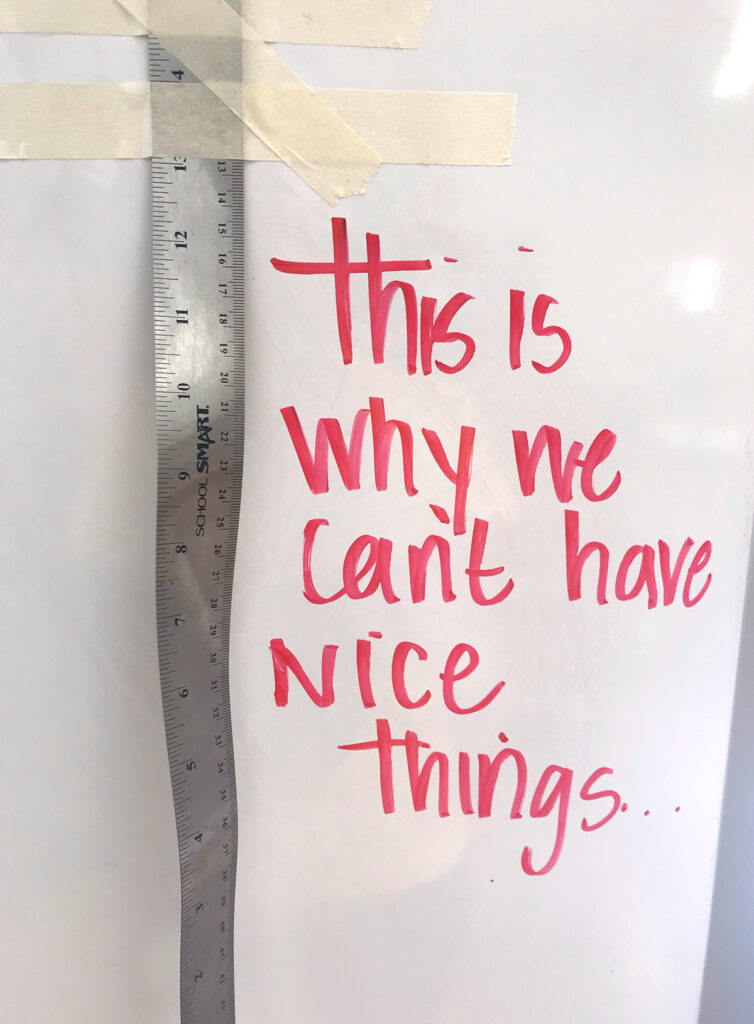
Oh yeah—and we can’t forget the constant question of, “Are we using inches or centimeters?”
10. Picking Up Pencils
Off the floor, under desks, or dropped in the hallway. There are so many pencils on the ground, yet students keep announcing, “I don’t have a pencil. Can I ‘borrow’ one today?”
Pro Tip: To ensure your pencils don’t get “permanently borrowed,” check out this hack.
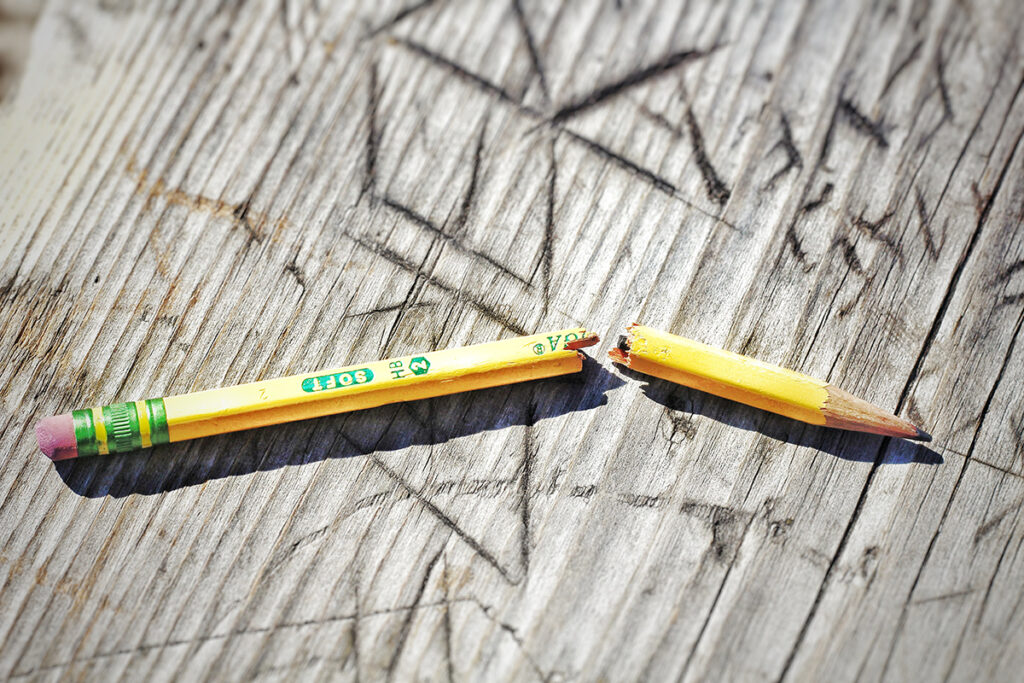
11. Defending the Notion That Art and Creativity Are Skills That Can Be Learned
I’m not good at art. I can’t draw a stick figure. I can’t draw a straight line! I don’t have a creative bone in my body. Art isn’t my “thing.” We have all heard some variation of these statements from students, parents, coworkers, and even family and friends! We also know that these are not true statements.
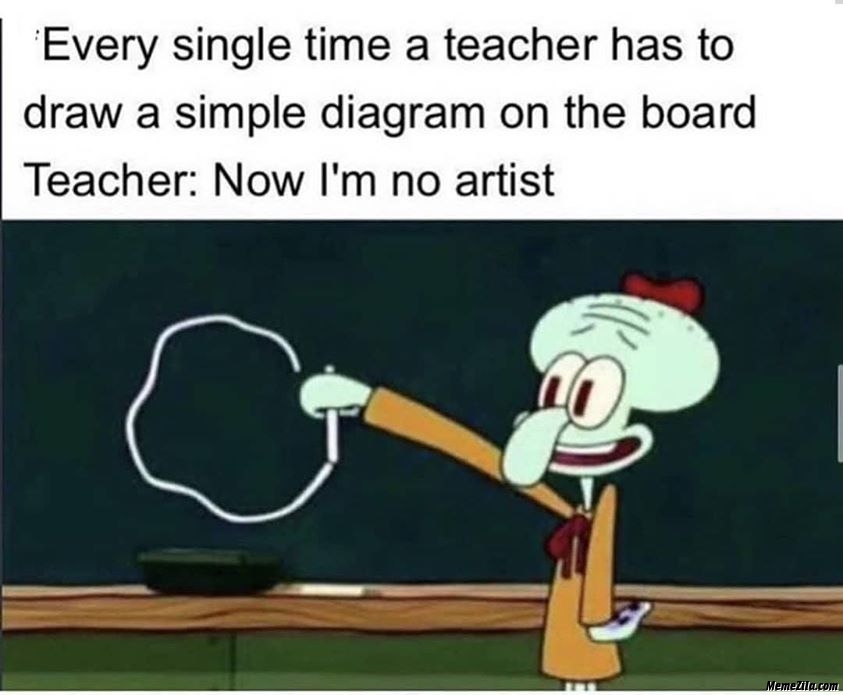
To equip you in your next conversation, check out these resources on advocating for the arts and creativity:
- 6 Powerful Ways to Advocate for Your Visual Arts Program Post Pandemic
- Why You Need to Add a Creativity Course
- Cultivating Creativity in Our Students (Ep. 235)
- 5 Surprising Things You Might Not Know About Creativity
12. Thinking in your head, “This could have been an email.”
There are so many interruptions in our day as it is; adding PA announcements and irrelevant PD always seems to push us overboard. From all art teachers everywhere, please make it an email and let us prep our million supplies!

13. Preventing Your Room From Being a Hoarding Zone
While we do appreciate donations of supplies and materials, we do not want your random stuff from your weekend house purge dumped outside our door or shoved inside our mailbox.
While these tips won’t get rid of all the unwanted donations, they can help:
- Send an email at the beginning of the year with what items you do and do not accept and how/when to get the items to you.
- Put a box outside your door or the main office with a list of what you are collecting.
- If someone still gives you items you don’t want or need, thank them and kindly remind them to run it by you first next time so you can be sure you have space. Then toss the stuff if there is no room!
14. Gluing Everything
How many times a week do you get a student asking:
- Do you have superglue or a hot glue gun?
- Can I use it to fix my [insert random object here, i.e., shoe, bag, or glasses]?
- Or, even better, Can you fix my [insert random object here, i.e., shoe, bag, or glasses]?
The answer? Yes, of course, we have glue. But will it fix your item? Are you going to wait for the glue gun to heat up? Are you going to sit here and hold it together until the glue sets? Also, do you have a pass to be here or the bathroom? Hm…
15. Guarding Art Supplies From Walking Out of Your Room
Both students and teachers alike love to stop by our rooms to ask for art supplies to “borrow.” “Can I just borrow some clay?”
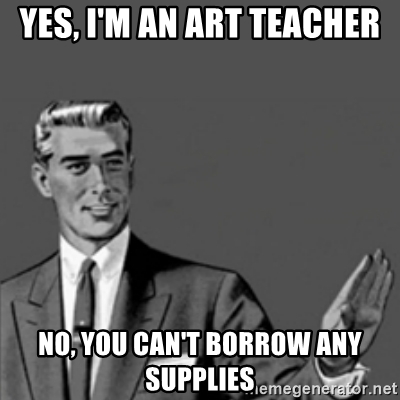
When it comes to tracking your supplies, check out these tips:
- Set up a policy about borrowing or using your supplies in a nice email at the beginning of the year. You can even add it to your poster policy/decoration policy/donation policy email. (See #3,#4, and #13, respectively.) Include what items you have to borrow and how/when teachers or students can request them. You can also put in a friendly reminder that art supplies are for students enrolled in art classes. Additionally, the supplies are required for the students to meet the objectives in the art curriculum.
- Check out this article for several hacks to keep your sharps safe and accounted for.
16. Preventing the “Clay Ghost” From Returning
Does anyone else have a recurring visit from the “Clay Ghost?” No matter how many times you wash your tables or supplies after a clay lesson or unit, the clay haze just keeps reappearing.
P.S. How many art teachers out there have clay permanently smashed into their wedding rings?
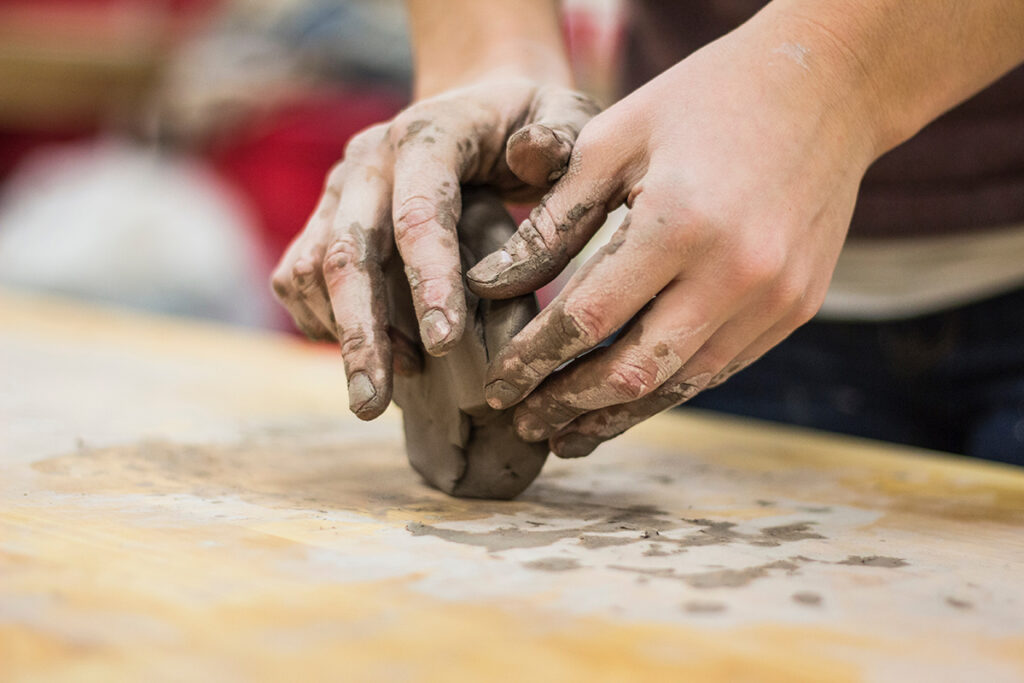
17. Answering the Never-Ending Student Questions
We love questions! Questions are good and indicative of curiosity and a willingness to learn. But then there are the repetitive questions you hear a million times a day, sometimes from the same student:
- Am I done yet?
- What do I need to do to get an A?
- What do I do next?
- Where is [insert supply or material that has never moved location]?
Pro Tip: Read this article for three strategies to cut down on redundant student questions.
18. Sighing As You Look in the Mirror.
There is nothing like walking in the door of your home after a long (but fun!) day in the art room, only to discover that you have a giant smear of green paint across your cheek. How long have you gone with [insert art supply here] on your face/shirt/hair without anyone telling you?
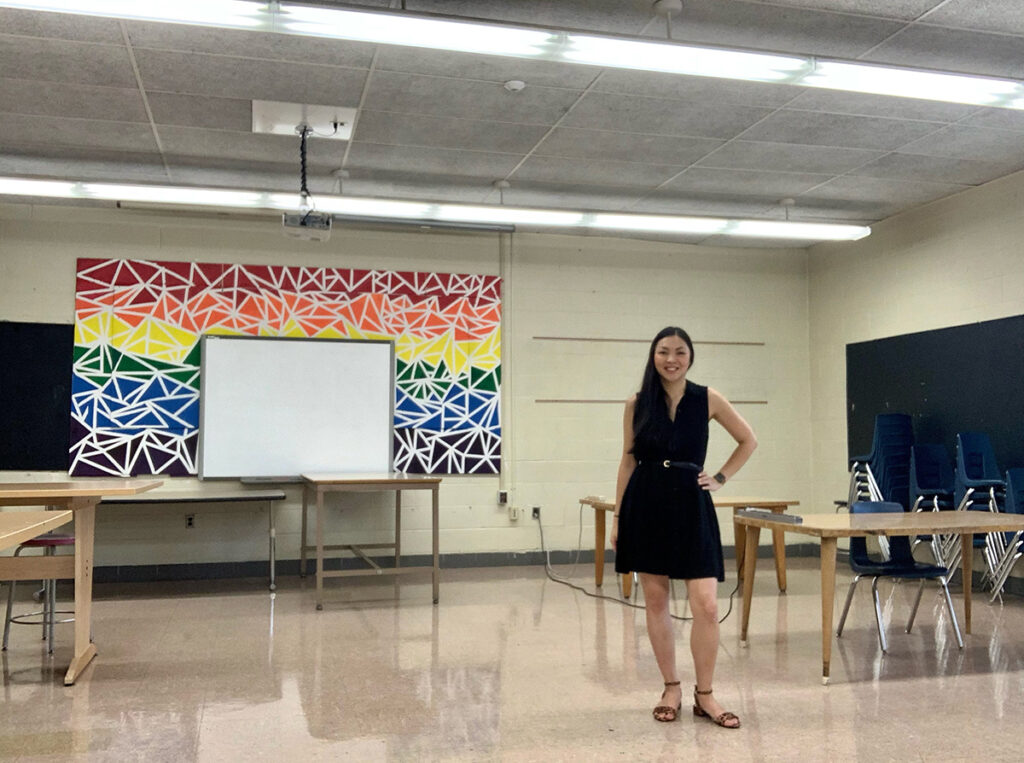
At the end of the day, no matter what ridiculousness we face, we still love our jobs! After virtual teaching, it can feel good to be back in the classroom doing these mundane tasks again. We choose to relive these recurring experiences over and over because we are passionate about art and care about our students.
What would you add to this list?
What makes it worth it to be an art teacher?
Magazine articles and podcasts are opinions of professional education contributors and do not necessarily represent the position of the Art of Education University (AOEU) or its academic offerings. Contributors use terms in the way they are most often talked about in the scope of their educational experiences.


